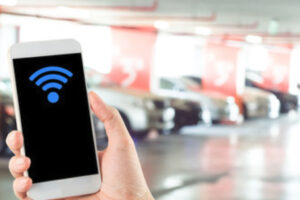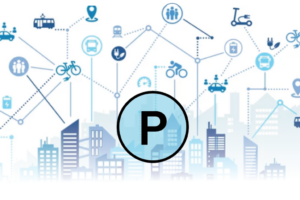Bill Smith
When is a parking solution not about solving a parking problem? It may surprise you to find out that parking garages can also provide solutions to non-parking challenges facing building owners.
Cell phone coverage poses unique challenges in urban high rise residential and commercial buildings. It can be difficult to provide consistent service throughout high-rise buildings, particularly in underground parking areas. The deeper the underground parkade—the tougher it is to provide consistent cell service.
And the problem is only getting worse. The latest cellular standard, “5G”, operates at very high frequencies and doesn’t penetrate buildings as easily as previous generations of Cellular did. While 5G may be great if you’re sitting in your car downtown, you may not be so lucky in areas with less direct sightlines.
Traditionally, developers and building owners have had to install distributed antenna systems ‘DAS’ to provide consistent cell service in their buildings. A distributed antenna system is a network of separated antenna nodes connected to a common source to provide wireless service throughout a structure or geographic area. DAS technology is effective but very expensive—a system can cost hundreds of thousands of dollars to install in a single building. And with cellular technology changing so rapidly, there’s no guarantee that these
DAS systems will continue to work with each new generation of cellular technology. That’s a lot of financial risk for a building owner to take on. The challenge is particularly acute in underground parking facilities, where 5G is particularly unreliable.
A Parking Solution
That was the challenge facing Goddard Investment Group in Dallas. Fountain Place, an office building owned by Goddard Investment, was ready for a cell upgrade that would extend reliable cell service into the building’s underground parkade. But the prospect of spending hundreds of thousands of dollars on technology that may…
By Ravali Kosaraju, PE, PTOE
In some corners of the parking industry “mobility” is considered a dirty word. For some professionals who have devoted their careers to finding new ways for people to park conveniently and safely, the current emphasis in mobility is off-putting.
In fact, though, parking and mobility are intrinsically connected. Mobility isn’t meant to replace parking; it’s meant to collaborate with it. In fact, as counterintuitive as it may seem, parking is an essential element of mobility.
To understand this, it’s first necessary to take a step back and look at what mobility really is. Mobility is the essential element of urban life. It’s about access. Access to the things people need to live a healthy and rewarding life. Access to friends and relatives, healthcare and other essential services, entertainment, shopping options, work, and recreation opportunities. Transportation is an element of mobility, but it’s not the totality of mobility. Rather, mobility is about having high quality transportation options.
What makes mobility options “high quality”? First is choice. Do residents and visitors have multiple transportation options? Are there opportunities to use their personal vehicles, access ride-share servicers, utilize public transit, and take advantage of micromobility? Is the community pedestrian friendly? Having a single transportation option isn’t conducive to mobility.
Time is also a key element. If it takes too long to go to and from destinations in a community, because of traffic or because there are too many stops on a bus line or subway line, you don’t have mobility. No one wants to spend hours to get to a grocery store and back, or from work and back.
Finally, safety is a key element of mobility. If it isn’t safe to walk, drive, take public transit, or bike you don’t have mobility.
So, transportation doesn’t equal mobility. You must offer…





